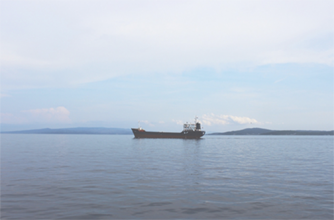Here’s the coolest “technology-meets-ingenuity-meets-sustainable-economics” story that I’ve heard in a long time: the International Sun-Earth Explorer-3 (ISEE-3) Reboot Project, a crowd-funded rescue mission to repurpose a 36-year-old NASA spacecraft.
Here’s the coolest “technology-meets-ingenuity-meets-sustainable-economics” story that I’ve heard in a long time: the International Sun-Earth Explorer-3 (ISEE-3) Reboot Project, a crowd-funded rescue mission to repurpose a 36-year-old NASA spacecraft.
Operating out of an abandoned McDonald’s restaurant near NASA’s Ames Research Center in California, a team led by former NASA employee Keith Cowing and “space technologist” Dennis Wingo cut a deal with the U.S. space agency. The group would try to wake up the ISEE-3’s onboard systems, refire its engines, bring the craft back into Earth orbit, and put the ancient mariner to work on new tasks.
That’s probably the best use of an abandoned McDonald’s hamburger stand that I’ve heard. (Actually, it’s the only one I’ve heard of. Who could imagine a place and people without the need for a Big Mac?)
Perhaps the Golden Arches caught their attention, but in place of the iconic curved brandmark, these visionaries saw the arcs of possible trajectories, intersections in space and time.
In any case, after digging through old documents in the basements of retired NASA engineers, the reboot team recreated the command language and began executing their mission. To their surprise they discovered that many of the ISEE-3’s sensors were still operable after all these years and having absorbed five times their design level of space radiation. And there was even a little gas left in the tank!
Why did they do it, Cowing asked rhetorically in a July 19 New York Times op-ed article? “First, because we could: Recycling this piece of space hardware seemed cool and fun. And second, because it might generate useful scientific data — and we could take people all over the world along for the ride,” he answered.
For me, the storyline of the ISEE-3 Reboot Project resurrected not only an aging spacecraft, but the flagging narrative of American can-do, imagination, and energy — those natural dynamics of a young country.
But now this nation is middle-aged, has put on some pounds, been around the block more than a few times. Often it seems as if all that Yankee ingenuity has gone to figuring out ways to make as much cash as soon as possible with other people’s money.
So, this could be an ISEE-3 moment for the GPS program, with lessons that could be learned by all the world’s GNSS operators.
Any one who has had a bathroom or kitchen remodel project has come face to face with the unhappy reality that many things aren‘t built as good as they used to be or even available at any cost. Skill sets and supply lines have disappeared. Components are unreliable and fail quickly.
In many ways, legacy GPS space vehicles have demonstrated the durability of ISEE-3 — the latter voyage begun, by the way, the same year as the first GPS satellite was launched. The 2nd Space Operations Squadron recently removed SVN-34 from its primary orbital slot. Launched in October 1993, the satellite far exceeded its 7.5-year design life and remains capable of broadcasting healthy signals.
The far-reaching changes in stakeholder leadership described by Dee Ann Divis in this month’s Washington View column gives us the chance to think outside as well as inside the box. It provides an opportunity to build not merely personal resumes but to rebuild and build out an enterprise that has in its way transformed modern life as thoroughly as the Internet or mobile communications.
GPS is the best non-military deal this country has gotten since the National Defense Highway System. But just as the crisis in the Highway Trust Fund has shown, GPS could suffer the same fate of underinvestment — of ideas as well as money.
Despite our recent diminishing expectations for the mean mission duration of products like dishwashers and refrigerators, we need to treat GNSSs as long-term capital assets with a leadership perspective as strategic as the infrastructure and national role that it represents.
That may require us to look beyond American shores for solutions.
We need to recognize that the decisions we are making now are not for ourselves, or at least for ourselves alone, but for our children and our grandchildren. So, our mindset should not be that of quarterly profits and live for today (sha-na-na) but for a future world that will have ever-greater needs for affordable, available, and accurate positioning, navigation, and time.





